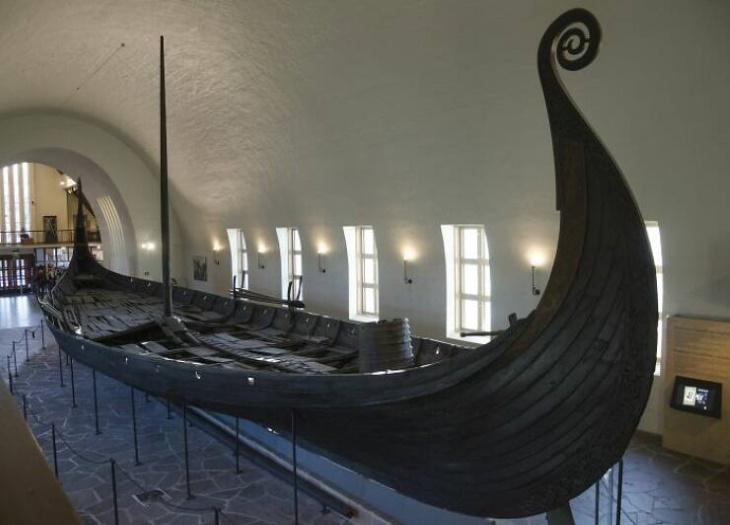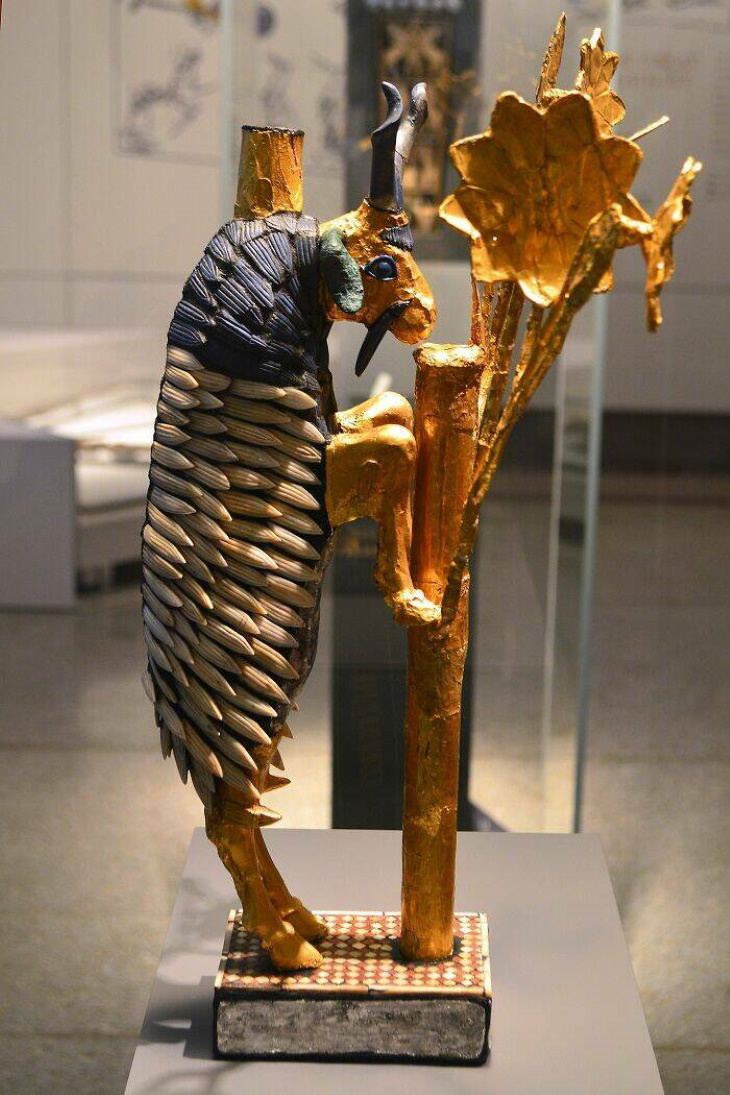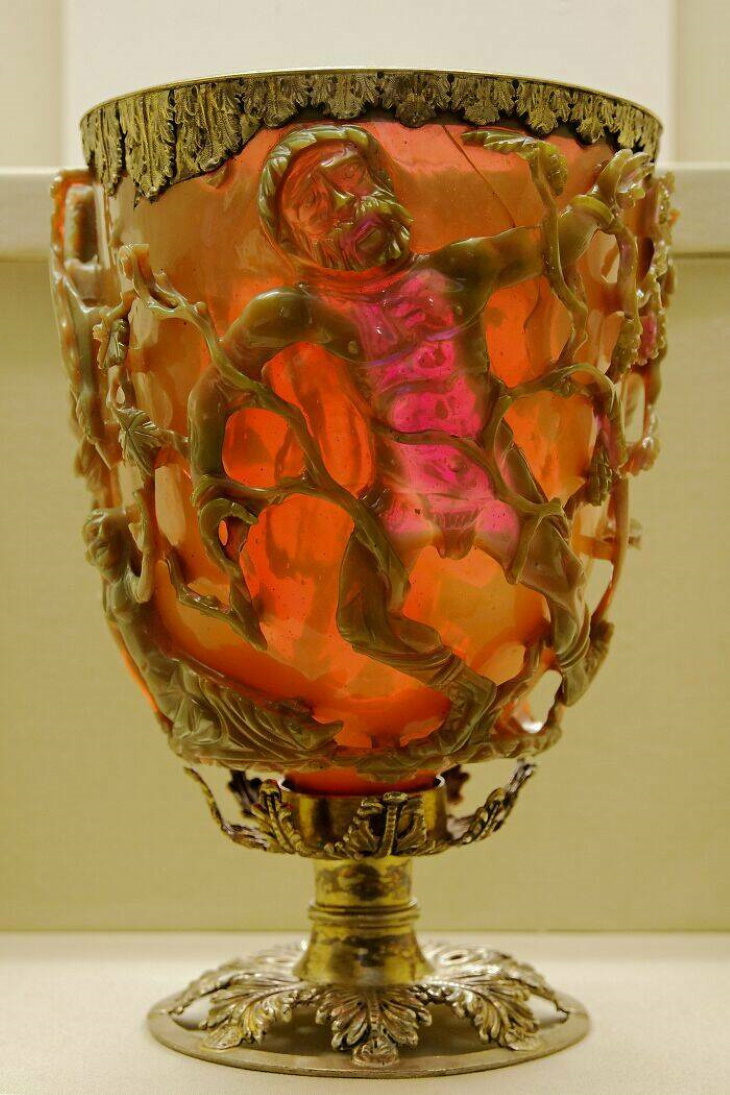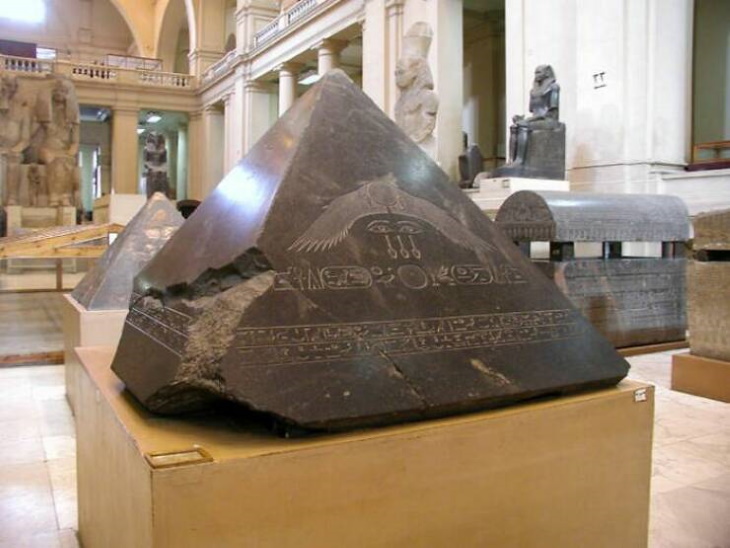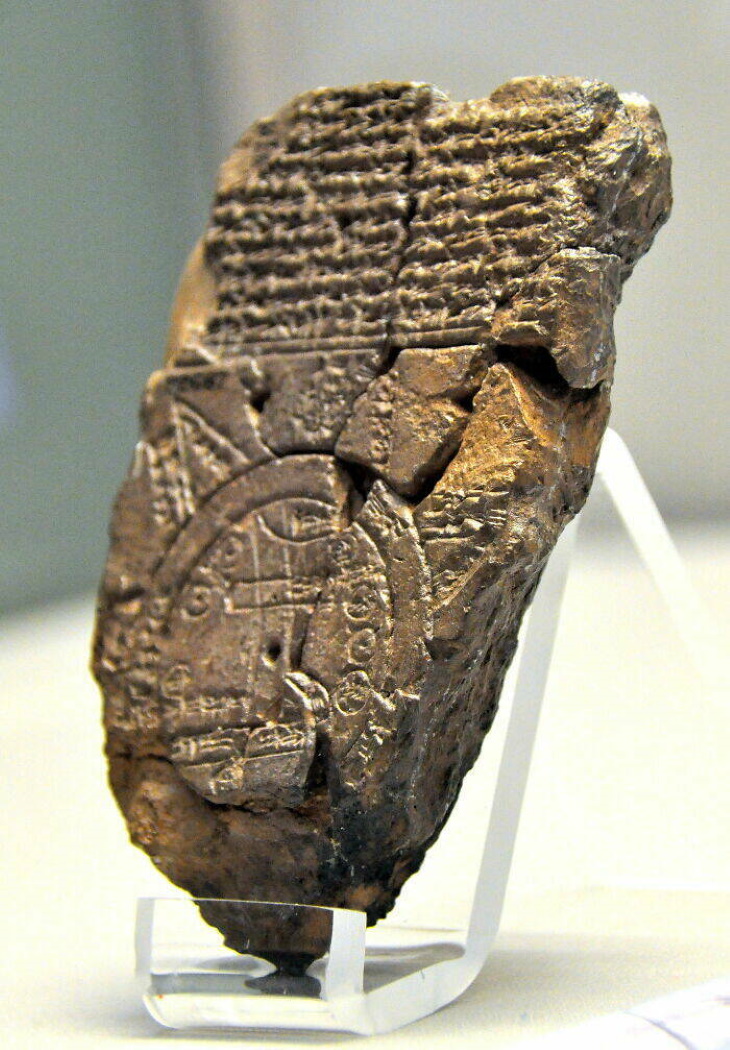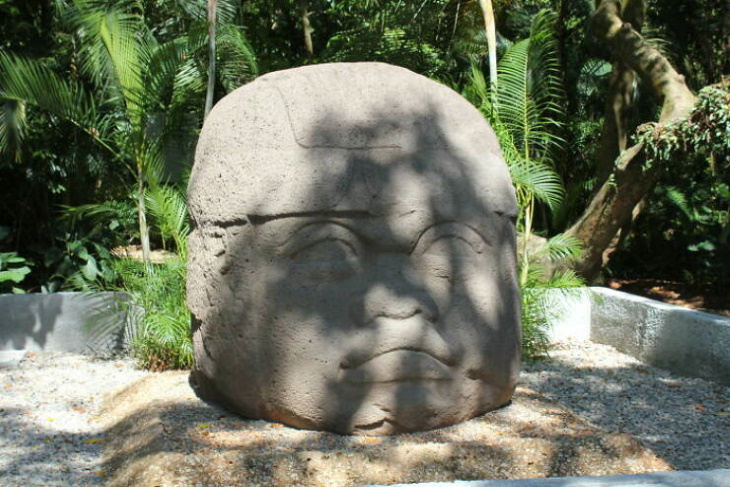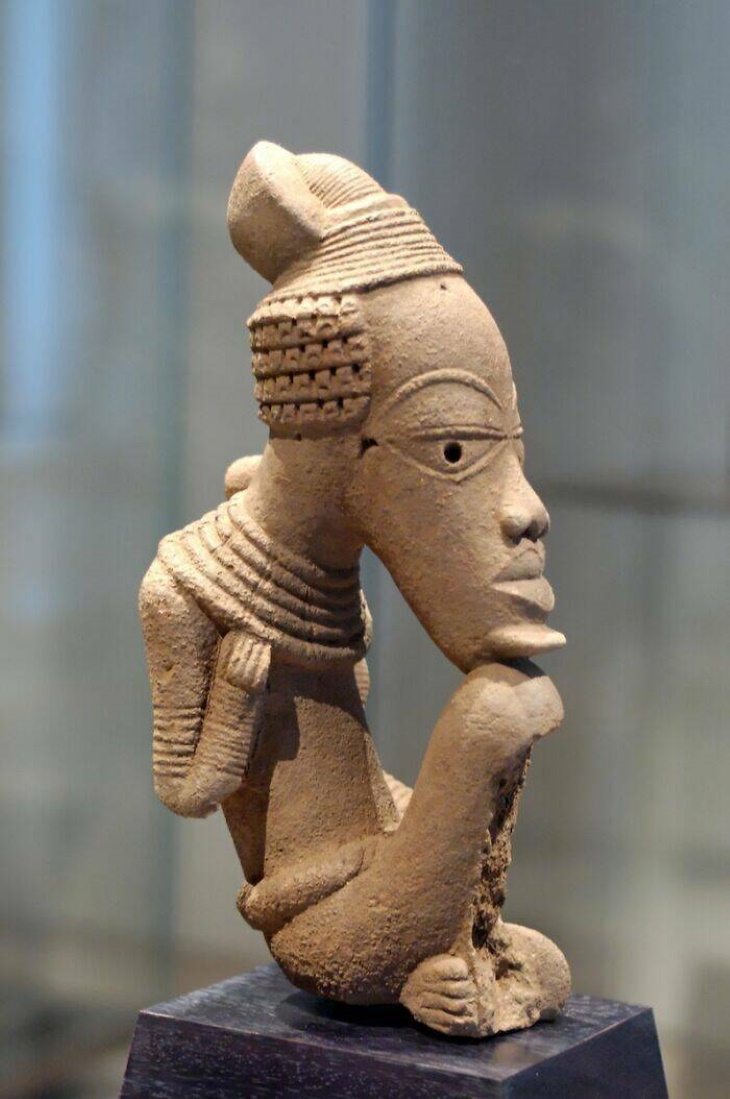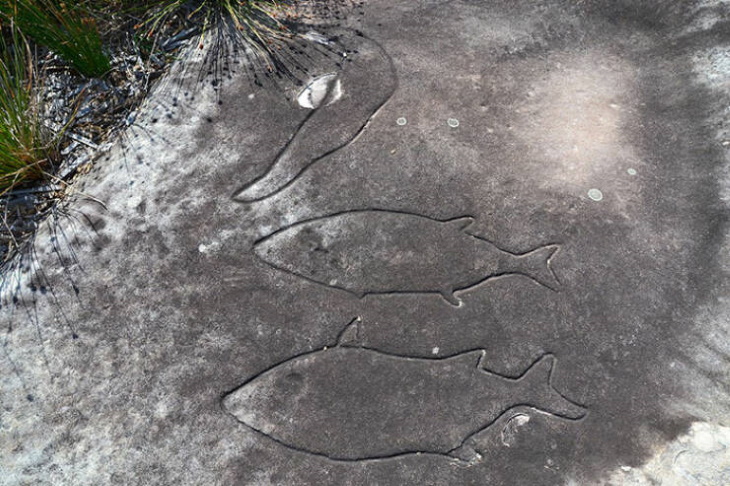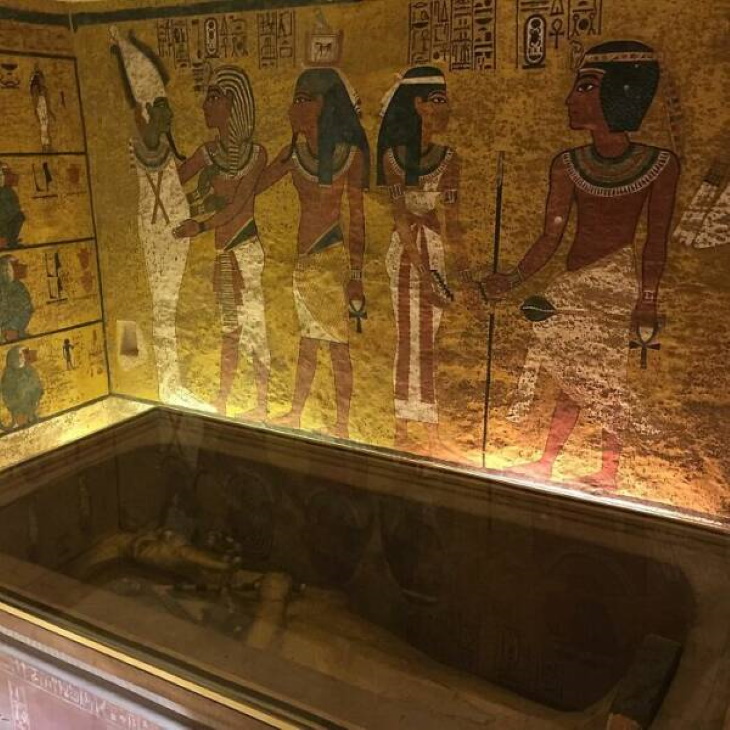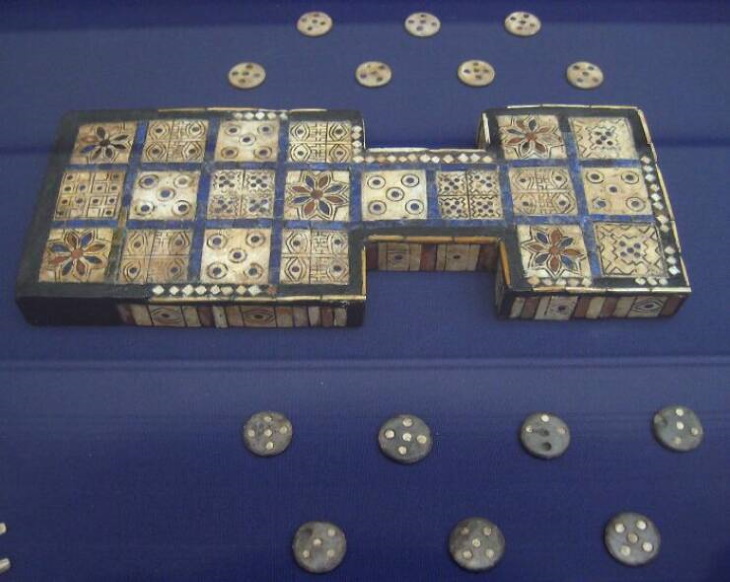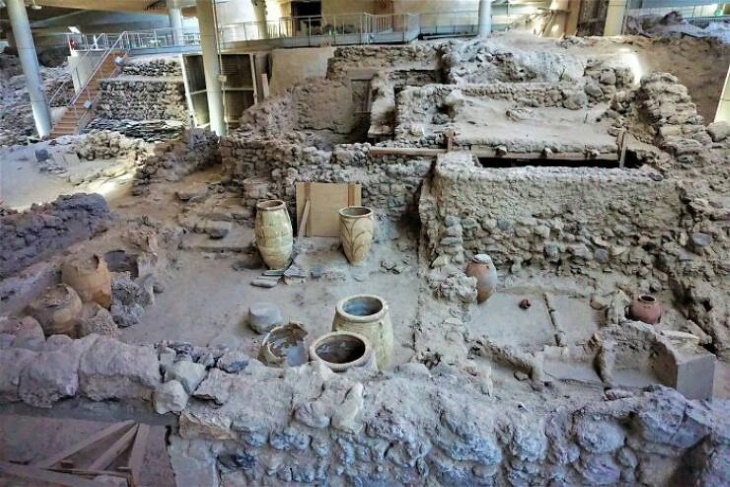1. The Oseberg Ship (820 AD)
People love Norse mythology and know a lot about the Viking’s travels, but his stunning Viking vessel doesn’t get the fame it deserves. Uncovered in 1904 near Tønsberg, Norway, the Oseberg Ship is one of the most intricate and unspoiled artifacts from the Viking Era ever found.
2. Book of Kells (9th century AD)
You likely heard the story of the Celtic warrior queen Boudicca, who fought against the Romans when they invaded Britain. This may give you the impression that the Celts were barbaric people who only knew how to fight. However, one of the most famous artifacts from Ireland shows the Celts from a different side. The Book of Kells is a four-volume Gospel book, decorated with intricate calligraphy and beautiful illustrations of people, Celtic knots, animals, and mythical creatures. This manuscript reminds us that Celtic tribes were talented artisans who brought many artistic innovations to Medieval Europe.
3. Ram in a Thicket (2,500 BC)
This artifact was unearthed in 1928 at the Royal Cemetery of Ur, an archaeological site located in contemporary Iraq. The Ram in a Thicket reveals just how advanced the crafting skills of ancient artisans really were. The golden artifact depicts a figure of a ram, and it’s decorated with copper, wood, and lapis lazuli.
4. Lycurgus Cup (4th century AD)
The Lycurgus cup is a Roman cage cup that depicts the mythical King Lycurgus. A cage cup, or a diatretum, was the most advanced and luxurious type of glassware in 4th-century Rome. The color of the cup changes depending on the angle of the light. This particular cup was discovered in 1,800 AD. The metal rim and foot are a later addition made by the Rothschild family, who purchased the cup in the 19th century.
5. The Pyramidion of The Black Pyramid of Dashur (1,820 BC)
Did you know that every ancient Egyptian pyramid once had a capstone? Called pyramidions, these stones rarely survive to this day. In the image above, you can see one of the best-preserved pyramidions – the pyramidion of The Black Pyramid of Dashur. The stone still has legible writings. What’s more, it was found by accident in a pile of rubble not far from the Black Pyramid of Amenemhat III.
6. Babylonian Map of The World (900 - 700 BC)
It’s fascinating to see and analyze early maps, as these old artifacts reveal a lot about ancient people’s worldviews. This famous map was created by the Babylonians, and it has the Euphrates river at its center. Historians also recognize prominent cities, an ocean, and other surrounding territories. What a tiny world!
7. Sword of Goujian (771 - 403 BC)
Believe it or not, this Chinese dagger is 2,500 years old, but it’s still razor-edged. The bronze sword features a beautiful design and is resistant to tarnish. The blade was discovered in a tomb near Hubei, China, and it’s attributed to Goujian, the king of Yue, an ancient Chinese kingdom.
8. Olmec Colossal Heads (1,500 - 400 BC)
These 17 stone figures of human heads have been created by the Olmec civilization, the first settled civilization in Mesoamerica. The basalt rock sculptures range from roughly 3-10 feet (1-3,5 m) in height, and all of them depict males with varying facial expressions.
9. Nok Terracotta Sculptures (1,500 BC - 500 AD)
These mysterious sculptures are scattered across the Sahara desert. Few of these famous terracotta artifacts have survived in their entirety and little is known about the function of these sculptures. However, the level of their craftsmanship is sublime.
10. Sydney Rock Engravings (3,000 BC)
One of the oldest artifacts on this list are these Neolithic rock engravings created by Aboriginal Australians. Many detailed images like these ones can be found on rocks across the continent, many of which date back to at least 3,000 - 4,000 BC.
11. King Tutankhamun's Tomb (1,332 BC)
One would think we knew everything about the most famous mummy in the world. Alas, I only recently found out that King Tut’s tomb was a rushed work. Apparently, microscopic analysis of the microbes on the burial chamber's walls revealed that the wall paint wasn’t even allowed to dry completely before closing the tomb.
12. Royal Game of Ur (2,600 - 2,400 BC)
Humans have played board games for literally thousands of years. The Royal Game of Ur was a popular game in the Mediterranean and Middle East at around 2,600 BC. Sadly, even though the game survived through the ages, the rules on how to play it were lost in time.
13. Akrotiri, Thera (1,500 BC)
In the 15th century BC, the Greek island of Thera (now Santorini) followed the unfortunate fate of Pompeii. The Thera volcano erupted and erased all signs of life and civilization, completely destroying the Bronze Age settlement. It wasn’t until 1967 that the city was uncovered by the Greek archaeologist Spyridon Marinatos.
14. Sutton Hoo (6-7th century AD)
This site in eastern England is where several famous medieval cemeteries are located. One of the biggest finds was the Anglo-Saxon ship burial. The 86-foot (27 m) ship tomb belonged to an Anglo-Saxon leader, who was buried with all of his treasures. Discovered by archeologist Basil Brown, it is among the biggest archaeological finds in the UK.

